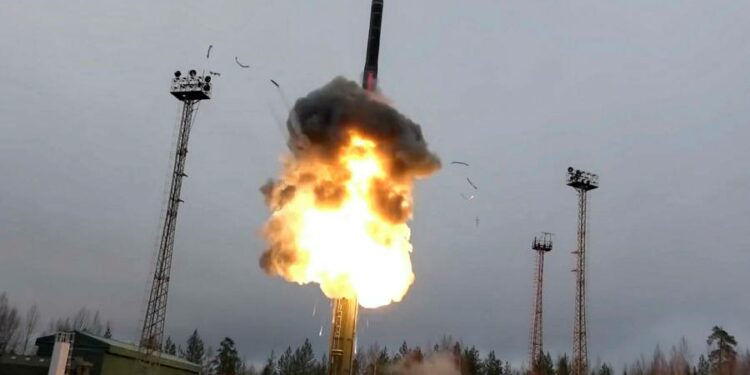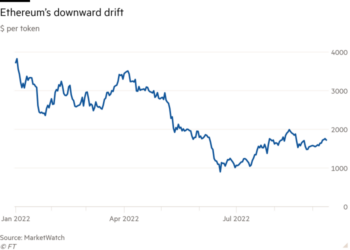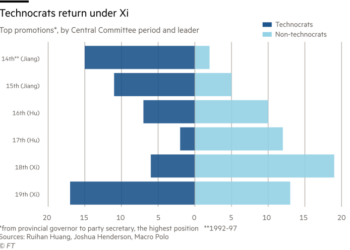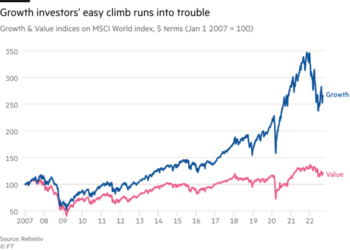The writer is a senior fellow at the Hudson Institute. He previously served as an under-secretary of state and chair of the Pentagon’s Defense Science Board
For those paying attention to the worrying advances in hypersonic weaponry by China and Russia, the news that the Pentagon is pushing US defence companies to hasten their own progress on hypersonic weapons is a welcome development. The race must now be on to catch up, or risk ceding the advantage to America’s adversaries.
Both China and Russia conducted hypersonic missile tests in the summer of 2021. Russia’s test of its hypersonic Skyfall nuclear-powered and nuclear-armed cruise missile took place at its Novaya Zemlya Island test range in the Arctic Ocean. Being nuclear powered, the missile has unlimited range.
China also conducted two flight tests of hypersonic ballistic missiles. One flew in a fractional earth orbit on a manoeuvring trajectory to the target region in China. The other also flew on a manoeuvring trajectory, and additionally released a second hypersonic object — a “first” for any nation.
The significance of these tests was quickly brushed off by both the arms control community and the media. Russia’s was reduced to environmental disregard (“a flying Chernobyl”) while China’s was dismissed as “nothing new” since Russian fractional orbital flights had taken placed during the cold war.
These reactions missed the importance of such capabilities in the nuclear modernisation efforts of both China and Russia. Manoeuvring hypersonic vehicles are not simply another means of delivering a nuclear warhead to a target. Instead, they are an essential part of a “system of systems” designed to defeat the US’s early warning abilities.
The US ballistic missile early warning system is a set of satellites and radars that are integrated with their command, control and communications system to detect, locate and track adversary missile attacks. Taken together, these interdependent capabilities are crucial to maintaining an effective nuclear deterrent. They were so fundamental to mutual deterrence during the cold war that the 1972 Anti-Ballistic Missile Treaty included provisions aimed at protecting them from attack.
The evolving importance of space has been obscured by the seamless way in which space capabilities have become integral to both everyday public life and national security. But operations there are decisive for nuclear deterrence.
Both China and Russia have well developed advanced offensive capabilities in space. In late January, for example, China’s Shijian 21 (CJ-21) satellite disappeared from its regular position in geostationary orbit 22,000 miles above the earth. The CJ-21 manoeuvred close to one of China’s malfunctioning satellites in its 35-satellite Beidou constellation. There it used a grappling arm to move the malfunctioning satellite to a “graveyard” orbit.
The Space Priorities Framework published by the Biden administration in December recognises space as “critical to modern warfare”, but continues to adhere to its position that the US will not use space for offensive military applications. This leaves our deterrent vulnerable to nations who do not share this view.
The US is developing a space-based system that uses advanced infrared sensors which may be able to detect manoeuvring hypersonic warheads. However, current missile defence systems do not permit them to engage with rapidly manoeuvring warheads. China and Russia have also developed counter systems that jeopardise US space monitoring and communications capabilities at low, medium and high altitudes.
By manoeuvring their satellites for offensive space operations adjacent to US satellites, China and Russia could conduct a wide variety of offensive operations. These include disrupting, spoofing or destroying sensors, on-board computation, data links or satellite electric power systems, and inserting malicious code using cyber techniques.
All of this is augmented by their ability to employ both cyber and kinetic capabilities to attack critical American infrastructure. This is the basis upon which military operations depend, as well as the electric power system, national telecommunications and the air and rail transportation systems that underpin US economic and military power.
China and Russia’s manoeuvring hypersonic missile capabilities enable these adversarial powers to have an integrated capacity to defeat the US early warning system. Under these circumstances, the US would be blind to an incoming foreign missile attack, and its ability to respond significantly constrained.











